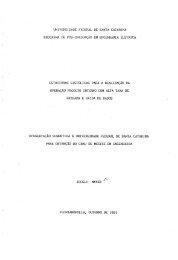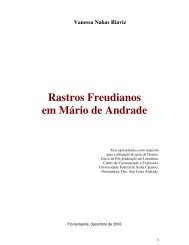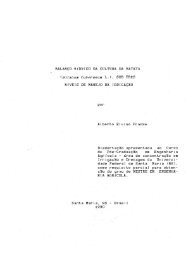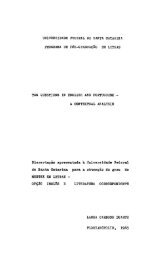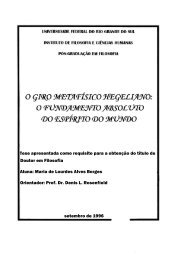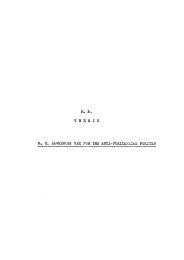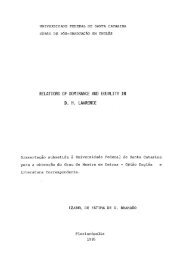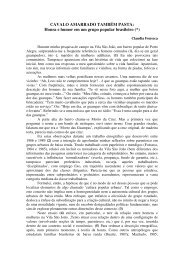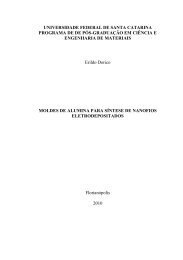Resultados e Discussão
Resultados e Discussão
Resultados e Discussão
Create successful ePaper yourself
Turn your PDF publications into a flip-book with our unique Google optimized e-Paper software.
and the lowest was 0.8% (35°C), both using the BCL/ginger system.<br />
However, the eep was > 99% and E was > 200.<br />
Using solvents with log P ≥ 3.5, the conversion degrees for<br />
the (R)-(+)-12 ester were 11.3-11.7%, and using solvents with log<br />
P ≤ 1.5 they were 1.3-4.7%. The highest conversion degree was<br />
obtained using a mixture of n-hexane:glycerol 9:1 (v/v), with a<br />
value of 23% (r.t., 24 h), with the BCL/ginger system. In these<br />
studies values of eep > 99% and E > 200 were obtained.<br />
Regardless of the experimental conditions, free or immobilized<br />
lipases in starch films showed a pronounced preference for<br />
the enantiomer (R)-(+)-12.<br />
The preliminary data obtained for the resolution of (R,S)-<br />
1-phenylethanol derivatives were promising. The 1-(4nitrophenyl)ethyl<br />
and 1-(3,4-dimethylenedioxyphenyl)ethyl acetates<br />
were obtained in conversion degrees of 56.1 and 26.5%<br />
(24h), respectively, in the n-hexane:glycerol 9:1 (v/v) and<br />
BCL/ginger:PEO (7:3 m/m) systems.<br />
In conclusion, the results reported herein show that the<br />
starch films of taro, yam, ginger or ginger:PEO blends can be<br />
used as supports for the immobilization of various lipases. These<br />
systems were successfully applied in the synthesis of aroma esters<br />
and in the resolution of enzymatic secondary alcohols, under<br />
mild conditions.<br />
xx



